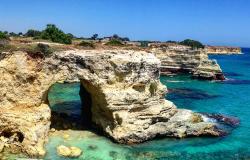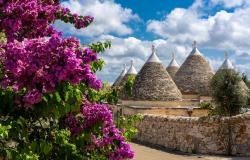 Eight ancient paintings of Saint Nicholas, one of which 1400 years old, will shortly go on display in Bari as part of an exhibition celebrating the port city's revered patron saint.
Eight ancient paintings of Saint Nicholas, one of which 1400 years old, will shortly go on display in Bari as part of an exhibition celebrating the port city's revered patron saint.
The icons are on loan from the Monastery of St Catherine, located at the foot of Mt. Sinai, where the high altitude and unusual conditions have kept the works in remarkable condition.
Created between the 7th and the 14th century, the icons are the oldest surviving representations of the saint.
The earliest piece in the collection was created in Egypt in the 7th century, using encaustic techniques, in which paint is made of pigment mixed with beeswax and fixed with heat after its application.
The later icons were produced by more sophisticated artists from Constantinople, using Byzantine layers of dazzling gold.
But according to organizers, it is the age of the icons and their astounding condition that make them so special.
In addition to the unusual climate, the works have partly survived intact thanks to the location of the 6th-century monastery and its fortified walls.
These meant the complex's precious contents escaped unscathed from the iconoclastic controversy, a movement in the 9th century when it was decided icons should no longer be revered and many were destroyed.
Organizers have ensured meticulous conditions for the Bari exhibition, perfectly reproducing the climate of the Sinai desert after weeks of monitoring temperatures and humidity there.
The show opens in Castello Svevo on February 8, and runs through until May 6, when Bari starts its annual three-day festivities commemorating the saint, whose bones are buried in the Italian city.
Saint Nicholas was born at Patara in Anatolia, the ancient kingdom that corresponds to contemporary Turkey. Born into a wealthy family, probably in the shipping business, he became one of the region's most important bishops and thanks to his miracles and philanthropy his fame spread throughout most of the Christian world.
His feast day is December 6, marking the anniversary of his death in 333 AD. On this day children in Turkey and many European countries discover secret gifts have been left for them by the generous, red-clad saint.
In addition to the December 6 celebration, Bari also has its own special Festa di San Nicola, which runs from May 7-9. On May 8, the relics of the saint are taken out to sea in a line of boats that passes in front of the city, commemorating their arrival a thousand years ago.
Although St Nicholas lived and was buried in Myra, where he was bishop, his bones were stolen by Italian sailors who took advantage of the confusion as the city was being overtaken by Islamic invaders. The sailors carried the remains back to Bari with them, where they arrived on May 9, 1087.
Several cities claim to house part of St Nicholas's relics but the set of bones in Bari is remarkable in that most of the skeleton has been preserved in one place.
A report of the bones' measurements, based on photographs taken in the 1950s, was sent to a British forensic laboratory in 2005.
The review of the data revealed that their owner was barely five feet in height, shorter than average, even for his time, and had a broken nose.


